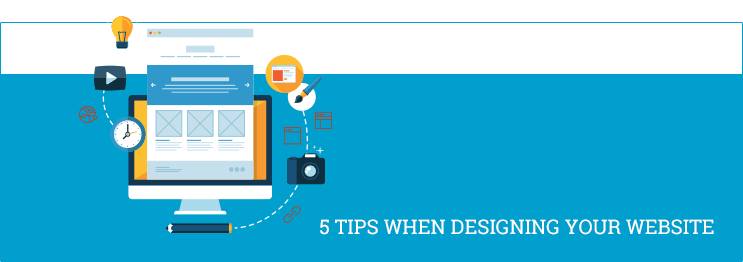5 Tips for Personalized Website Design
Current research indicates that 40 percent of online consumers prefer to buy from retailers who personalize their website’s experiences across all channels. Moreover, almost 74 percent (about three in four) of the same consumers get frustrated with websites whose contents have nothing to do with whatever they were looking for.
From the studies, there is no doubt that a personalized website is an advantage – in every perspective – to an online marketer. It contributes big to the success of a business.
When it comes to website personalization, quite a number of aspects are taken into account. Some of them include the likes of:
- Location
- Various motivations
- Different devices
- Time constraints
Benefits Of Designing Your Website To Serve Customers
With the technological advancement, online marketers have the capability of gathering information about a website’s visitor. “Organizations are spending thousands and sometimes millions of dollars just to create a dynamic web experience,” explains Itai Sadan, who is a co-founder and CEO at PlatformDudaMobile. His company recently rolled out the inSite, which is a software that adds dynamisms into the web content based on customer behavior. This in turn creates a personalized viewing experience. Sadan continues and adds, “This type of personalization often requires a substantial web development and design. And that’s why we are happy to bring affordability into the industry.” Web personalization on a large scale is in fact possible because of an increasing number of low-cost options, which are available to business owners.
5 Tips For Designing The Website To Determine Individual Customers
Anyway, let’s have a look at five ways to help you design your website so that it serves various customers on an individual level.
- Analyze The Frequency Of User Experiences
A new website visitor will always be looking to get a different information – something different! This is unlike a regular visitor.
Therefore, as David Reischer, a marketing officer at LegalAdvice.com puts it, “tracking each user in a different way is important for it gives every user a different experience.”
He goes on and adds, “we usually make use of cookies to track a returning visitor. This directs the visitor to the appropriate and relevant webpages, thus making navigation through the website easier.”
The best of tracking a first-time visitor is by including a phone number, a video tutorial, a business address, or anything that might capture your leads’ attention.
“For the frequent visitors, you can add a spot where they get to sign up for a mailing list, or add information about new and upcoming products,” advices Sadan.
- Consider The Geo-logical Feature
This couples up both online and offline marketing. The ability to know and determine where someone is browsing from at the time of the visit is a game changer. “as online marketers, we have the capability of following up the individual buying journey of our customers, and then optimize it in every step of the way,” explains Bart Heilbron, a CEO at ofBlueConic. “Even though we couldn’t use these insights in the past, especially in most of our offline interactions, it is now possible courtesy of the geo-locatio,” Bart reckons.
For instance, if a potential buyer is a few blocks away from a business premise, and then happens to search for the product through a smartphone, the buyer is more than likely to convert into a regular customer.
- Adjust Content Based On Certain Times
You get to increase your conversions if you change your web’s contents based on time of day, week or even seasons.
For example, you can decide to replace your website’s reachable phone number during business hours, with a contact form when business hours are closed.
This will reduce the chances of you missing out on potential customers, who would like to contact you outside business hours.
“This feature where a marketer offers different products over the course of a day in accordance to targeted trends, culture and habits tends to increase conversions,” says Ken Wisnefski, the CEO at WebiMax. Ken adds on, “one particular example here is; restaurants offer diverse menu throughout the day, from lunch to dinner.”
- Recognize Special Events And Holidays
Being acquainted with special days and holidays, it means that you are actually personalizing your website and thus connecting with your customers’ sentiments. You can do this by changing the theme to your website into hearts during Valentine’s Day, or you can add an image of fireworks during 4th of July. “You will be amazed by the kind of positive effect such a theme can have on your customers. Because of this, the conversion rate can be equally positive,” claims Sadan.
- Adapt Content To Capture The Visitor
It is utterly important that you know the original source from which the customer visited entered the website. This should have a great impact on the landing page they’ll first see. This offers a seamless yet consistent experience to your visitors. And according to Sadan,
“Visitors coming to your website coz of an email marketing campaign or a referral deserve a message that’s aligned with the kind of message they saw from the referring site. And in some cases, offering coupon at this point can as well be a good idea.”
Final Thoughts
With the aforementioned 5 tips for designing your website, you should surely be able to serve your potential and regular customers on an individual level.





